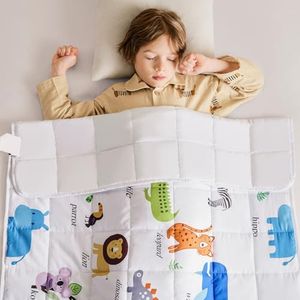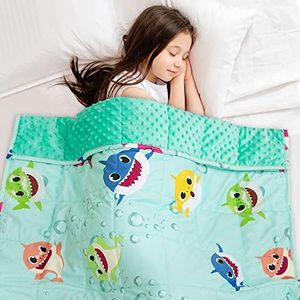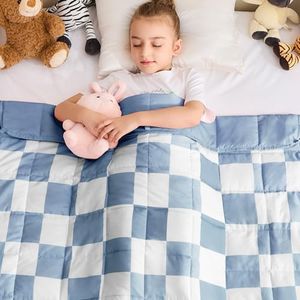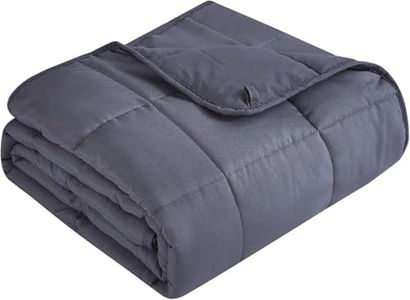We Use CookiesWe use cookies to enhance the security, performance,
functionality and for analytical and promotional activities. By continuing to browse this site you
are agreeing to our privacy policy
7 Best Kids Weighted Blanket
From leading brands and best sellers available on the web.Buying Guide for the Best Kids Weighted Blanket
Choosing a weighted blanket for kids can be a great way to help them feel more secure and relaxed, especially if they're having trouble sleeping or calming down at night. The right blanket can help provide gentle, comforting pressure that mimics a hug, promoting a sense of well-being. However, it's important to consider the key features carefully to ensure the blanket you select is safe, comfortable, and suitable for your child's unique needs.WeightThe weight of the blanket is its most defining feature and plays a crucial role in determining how effective and safe it will be for your child. Weighted blankets are designed to provide 'deep touch pressure,' which can help with relaxation, but too much weight can be uncomfortable or even unsafe. Generally, experts recommend that the blanket weighs about 10% of the child’s body weight, sometimes with an extra one or two pounds as a buffer. For example, a child who weighs 50 pounds would do well with a blanket weighing around 5-7 pounds. It's important to avoid blankets that are too heavy, as they can limit movement or cause overheating, and to choose a weight that your child can lift and move independently. Thinking about your child’s size, strength, and comfort level will help you select the best weight.
SizeThe size of the blanket affects how well it covers your child and how comfortable it feels. A properly sized weighted blanket should fit your child’s body—not necessarily the size of the bed. It should cover them from shoulders to toes without hanging over the sides of the bed, as extra overhang can cause the blanket to slide off. You’ll usually find sizes like 'twin,' 'throw,' or options made just for kids. When deciding, consider your child's height and whether they like to be fully covered or prefer a smaller blanket for portability around the house.
Fabric and MaterialThe outer fabric and interior fill materials influence the comfort, breathability, and maintenance of the weighted blanket. Common fabrics include cotton, polyester, and minky (soft, plush materials). Cotton is breathable and ideal for warmer climates or hot sleepers, while minky fabrics offer a cozy and soothing texture. Inside, the weights are typically provided by glass beads or plastic pellets. Glass beads are generally quieter and provide even weight distribution, whereas plastic pellets might be bulkier. If your child has allergies or skin sensitivities, look for hypoallergenic and Oeko-Tex certified fabrics for extra safety and comfort.
WashabilityKids can be messy, so it's important to choose a weighted blanket that’s easy to clean. Some blankets have machine-washable covers that can be easily removed for washing, while others require spot cleaning or professional laundering. Frequent washing may wear out low-quality fabrics or stitching faster, so think about how easy it will be to clean and maintain the blanket, especially if your child plans to use it daily or in different settings.
Safety FeaturesSafety is especially important when choosing a product for kids. Look for a blanket with sturdy stitching so the inner weights won’t spill out, and make sure the blanket has no loose parts or small detachable pieces that could pose a choking hazard. Some blankets come with certifications or safety checks, which can add peace of mind. If your child has certain health conditions such as respiratory issues, always consult with a pediatrician before use. Assess how independently your child can use and move the blanket to ensure they’re always safe while using it.
Temperature RegulationWeighted blankets can sometimes cause users to feel warm, so consider how well the blanket manages heat. Some are designed with breathable fabrics and moisture-wicking properties to keep sleepers cool, while others may feel cozier and warmer. If your child tends to overheat at night or you live in a warm climate, opt for lightweight, breathable materials like cotton or bamboo, and avoid heavy, thick covers.






